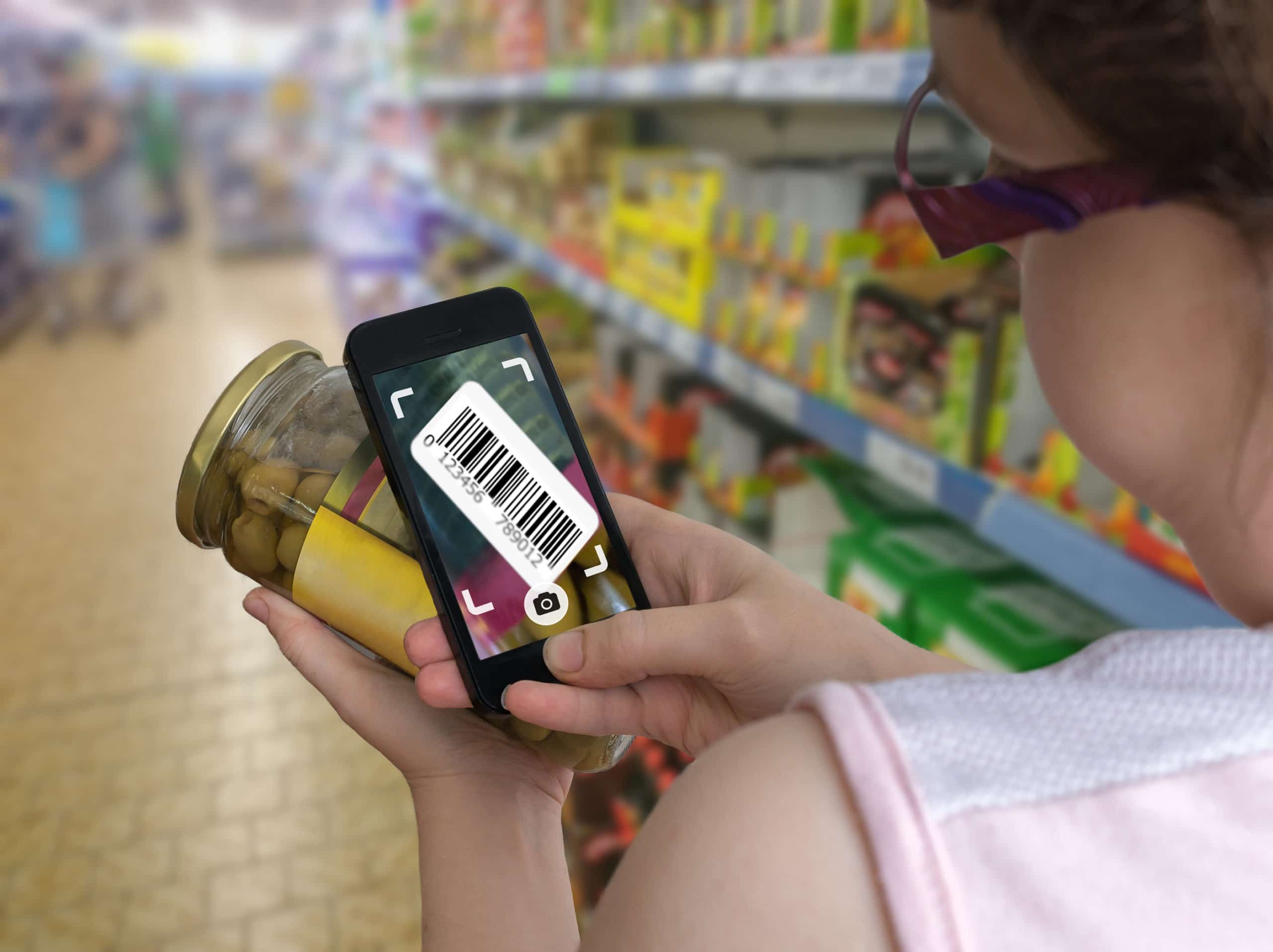Brands are starting to recognize digital’s impact on in-store shopping. Continue reading “Digital’s impact on in-store shopping: How CPG brands can use it to their advantage”
Category: b2b
How shoppers are using mobile apps to shop in-store

Shoppers using mobile in-store tend to do so to gain product or location information. Continue reading “How shoppers are using mobile apps to shop in-store”
An app-based product launch: How to successfully leverage digital marketing

An app-based product launch: How to successfully leverage digital marketing
There are three critical issues brands should focus on with a product launch: how to reach consumers; how to get them to share the brand’s message; and finally, how to get them to the store to buy their product. Unfortunately, that’s easier said than done. About 30,000 new products launch every year and every year, 80-95% of those new products fail to gain a following. The CPG sector is a particularly challenging space to launch a new product, but with a robust digital presence, success is more likely.
It’s not enough that consumers know about a product. They must also have a favorable impression of the brand and know where to find that product in the shopping aisle. By learning from consumer behavior, building awareness on multiple platforms, and creating campaigns that resonate, brands can grow enough of a following to help establish new products. It’s also possible to boost sales in the shopping aisle by making marketing efforts mobile. By reaching out to consumers through mobile apps, brands can target moving consumers and improve product launch results.
Spreading the Word About Your Product Launch: How to Reach Consumers
When you’re doing a digital product launch, you’ll want to choose a primary platform to share the launch and you’ll also need secondary routes to get those consumers to that place. This could include targeting a wide variety of sites where consumers congregate, to include the following.
Social Media
Platforms like Twitter, Facebook, and Instagram are excellent places to connect with consumers socially as well as encourage user-generated content.
Niche Communities
Niche communities: Reddit is a site where a brand can find niche communities that may be interested in their products. Focusing on these smaller communities within larger ones improves brand awareness.
Independent Websites
Check any comment section of a popular website and you may find that there is another community within a community. Consumers who comment in on CNN articles, as an example, tend to be frequent commenters who spend a lot of time on the site.
Video Platforms
YouTube and Vimeo allow users to both watch content and create and upload their own, making these sites ideal for branded content and advertisements.
A brand shouldn’t have to create multiple campaigns for each of these platforms. Instead, the goal should be to create a consistent, compelling conversation that translates across multiple platforms. It’s a matter of recognizing that many social media sites overlap, so a campaign should be able to do the same.
To understand this, you can look at the evolution of the hashtag. Initially, the hashtag trend started with Twitter. In 2007, the social media platform rolled out an option to categorize conversations by tagging it with “#.” While this was a very simplistic way to organize content databases, it was by no means in mainstream use. Today, we can see the hashtag on virtually all social media channels. Social media marketing mimics the evolution of the hashtag. Users discover a brand in one place but begin to follow it on other platforms if they become invested enough. This multi-media approach allows a brand to leverage that traffic to build buzz during a new product launch.
Tidy Cats, a Nestlé Purina Petcare brand, showed an excellent example of one of these multi-platform campaigns with its Kitten Week promotion. Tidy Cats is known for its parody content and decided to go with a fun parody on The Discovery Channel’s Shark Week. The award-winning campaign began on Twitter, where the brand shared kitten memes, gifs, images, and videos and encouraged viewers to share their own kitten content. That Twitter campaign also drove engagement on the brand’s YouTube and Facebook channels by tying in hashtags and user-generated content. Altogether, total views across social media channels reached 1.5 million in just a week and a half.
As evidenced through the Tidy Cats campaign, launching a campaign across multiple platforms can lead to increased engagement. Through a multi-platform campaign, a brand can significantly boost its following across channels and ensure they have the audience needed to spread awareness for a new product.
Connecting With and Inspiring Influencers on Social Media
In Internet culture, there’s a phenomenon called the 1% rule which brands should consider when establishing a digital campaign. This rule states that on websites where users can both create and edit content, only 1% of the users actively create new content, while the other 99% of the participants only observe. A variant of this rule, known as the 90-9-1 rule, breaks down participation as follows.
1%
On websites where users can both create and edit content, the minority will actually create this content. These creators will act as the most influential users of the site they’re on.
9%
On those same websites, there will be individuals who edit or modify content. This editing could include commenting, sharing, and voting on polls. These individuals contribute to existing content without creating their own.
90%
This percentage is where the vast majority of Internet users sit and represents the silent majority. These Internet lurkers will view content and read comments but will never actually interact with the content in any way.
What that means for you is that a small, vocal following will be responsible for sharing content about your brand. This is where influencers come in. While you may have heard the word “influencer” more than once, it’s important to note that there’s more than one type of influencer.
Mega-Influencer
Mega-influencers are online celebrities with massive followings across multiple networks. There’s no set number of followers to qualify someone as a mega-influencer, though most brands target those with more than 10,000 followers across several sites. Usually, deals with mega-influencers are paid for rather than organic. While useful, mega-influencers can also be very expensive, reducing your overall marketing ROI.
Macro Influencer
A macro-influencer will have a large following, but typically that following will be isolated to one specific social media site. This platform-specific fame usually results in an individual having a niche following. Consider the case of someone with a large following on a site like Twitch. As the site is populated by gamers, the followers of these macro-influencers will also be gamers.
Micro-Influencers
Micro-influencers may not have massive followings on social media, but what they do have is consumer trust. These are the individuals who hold sway within their social circles and can influence their friends and family to buy your product. While their reach might not be quite as far, it can be much more impactful as they usually have an intimate connection to those they recommend your products.
These types of influencers will help spread the message about your brand and drive others to try your products. Target these individuals with messages that feel personalized, or that uniquely connect to them. Pringles doubled down on this CPG marketing strategy and created an Internet phenomenon with #NobodyAskedYouKevin.
In 2017, Pringles noticed a trend when reviewing available data regarding their product online. They noted that consumers were posting “food hacks” that combined Pringles flavors to create new flavors. The brand decided to create the Stackable campaign around that, kicking it off with their Super Bowl commercial. They centered an advertisement around “flavor stacking,” using Saturday Night Live personality Bill Hader as a spokesperson. At the end of the commercial, Hader screams the line “Nobody asked you, Kevin!” That line created a spin-off with #NobodyAskedYouKevin trending on Twitter. Pringles, in turn, used the hashtag as their banner.
This strategy humanized the brand and let others know they were in on the joke. That made those consumers more willing to share the message and expand the brand’s reach for its campaign. While this wasn’t a new product rollout, it was an opportunity to view the product in a new way. Pringles capitalized on this and was able to turn that interest into brand awareness and sales through the use of mega-, macro-, and micro-influencers.
Directing Consumers to Products in the Store Using Mobile Apps
The final part of a product launch lies in leading consumers to the product in the physical world. Unless the majority of your sales happen in the digital space, you will need to drive the consumers to physically visit a location that carries the product, get them to interact with the product in the aisle, and finally, purchase that product. This step is where location-based mobile apps can help.
Any mobile campaign can be targeted to reach consumers at the right time. While a social media campaign can improve brand awareness and brand affinity, mobile makes that even more impactful. For example, if a consumer is checking their Facebook while at a store to purchase kitty litter, they may have noticed the Tidy Cats campaign. As that message reaches them just as they’re about to buy a product in that category, it’s very likely they’ll be the brand to gain the sale.
It’s possible to improve on this even more through the use of shopping apps. Apps that reward consumers for interacting with products, like Shopkick, can incentivize engagement and get consumers to seek out a product in the store. Essentially, they can move a consumer from awareness to purchase in one shopping trip.
Step #1 – Brand Awareness
When using Shopkick, a consumer will be able to check which brands are offering rewards points (aka kicks) in the store. This advertising primes the consumer with knowledge of the brand as they begin to shop.
Step #2 – Brand Affinity
When a consumer uses Shopkick, they’re able to scan the UPC of participating products to gain rewards. This brief interaction creates a favorable impression of the brand, and it prepares the user for purchase.
Step #3 – Brand Advocacy
A study on in-store consumer behavior found that 30% of products held in a potential consumer’s hand, for only moments, were purchased. When using Shopkick, consumers are incentivized to pick up the product, and can get more points for scanning the receipt of a purchased product, which boosts purchase likelihood.
Incorporating mobile into a new product launch campaign can significantly improve sales. Any brand that wishes to increase their market share through a digital campaign should find a way to engage with consumers in the store. Shopping apps like Shopkick create that connection, allowing your brand to travel the entire path to purchase with the consumer.
Using a shopping app to engage influencers while they’re in the shopping aisle can be part of your brand’s product launch how-to checklist. These influencers don’t have to have massive followings, as even micro-influences can help to create a stronger impact on your sales.
Shopkick offers a powerful shopping app to our partners to help boost awareness and increase engagement with new products. For more information, contact us.
The 3 top benefits of video marketing to in-store shoppers

Most marketers are well aware of the benefits of video marketing in general but are less versed in its potential in the store. Continue reading “The 3 top benefits of video marketing to in-store shoppers”
How to host digital product launch events that engage new audiences

Hosting product launch events online can help boost awareness of a new product.
Continue reading “How to host digital product launch events that engage new audiences”
How consumers shop differently today in the era of the app

If you want to see how consumers shop differently today just take a look at your smartphone. Continue reading “How consumers shop differently today in the era of the app”
The effective app-based product launch strategy brands should know

The number one goal of a product launch strategy is to get the product in the consumer’s hand, literally, which typically leads to a sale. Continue reading “The effective app-based product launch strategy brands should know”
The augmented reality marketing strategy trending in 2018
A strong augmented reality marketing strategy doesn’t depend on the consumer having expensive equipment to enjoy. Continue reading “The augmented reality marketing strategy trending in 2018”
Three New Product Marketing Strategies: How to Plan for Success

Three New Product Marketing Strategies: How to Plan for Success
To be successful in today’s highly competitive CPG industry, brands should develop new product marketing strategies that work in an ever-changing environment. By using agile innovation strategies, many challenger brands can compete with massive CPG conglomerates. Agile innovation is a strategy born in IT, but it is applicable in digital marketing—especially in the way it can be used to introduce a new product to a crowded market. By breaking down larger campaigns into smaller components, brands can create a strategy that’s flexible enough to adapt to changing consumer demand.
There is no one single new product launch plan that can be said to work for all brands, but of the plans that succeed, we can see common themes. A successful launch depends on timing, how the target audience is reached, and, above all, partnerships with the right platforms to drive product awareness. Through these strategies, brands can bring a product to market in a way that makes an impact.
Agile Innovation in Marketing
Agile innovation—as it applies to marketing—is a process that involves creating one large, overarching goal and breaking down the steps needed to get there. By breaking a CPG marketing campaign down to its basic components, there’s more flexibility in the process.
Hypothetically, if a brand was about to launch a new breakfast cereal—with an overall goal of gaining $1 million in sales in the first year—the brand would need to break that goal down to determine who would make those purchases, when they would make them, and how those consumers could best be reached.
Demographic
The brand should test market the cereal with adults and children to determine the target audience. For example, a child may request a particular cereal, and even pick it out in the store, but it will ultimately be the parent who purchases it. How will marketing efforts need to change to address both of these audiences?
Timing
When is the best time to go to market with this particular cereal with consideration for market demand? For example, a healthy cereal may sell better in January when people are trying to lose weight. Meanwhile, a children’s cereal may sell better during the summer, when kids are home from school.
Platform
Early test campaigns on specific platforms can help to reveal opportunities to gain an audience for a new product. As examples, the cereal brand might consider partnering with a mobile gaming company to reach kids and a shopping app like Shopkick to reach parents.
The benefit of breaking these tasks into components is that it allows rapid pivoting for a brand, which is what agile marketing is all about. As the digital space continues to change rapidly, with new products and campaigns appearing almost constantly, it’s essential to create a campaign that can easily be adjusted based on audience, platform, and timing.
Strategy #1: Understand Your Audience to Time Your Launch
Correct timing of a new product launch is imperative, as it will determine the demand of the market. Consider Unilever-owned ice cream brand Breyers. It’s no accident that the brand announced four new flavor mashups at the start of summer as this is a time of high demand for ice cream. However, timing isn’t always as obvious as that. Brands must consider several factors when launching a new product, including the following.
Season
Season may not seem like it impacts all product types, but it can. Consider sugar, as an example. Since sugar is used year-round, it might seem that season would not affect demand. However, consider the holiday season when consumers may be baking more and having more gatherings. This increased hosting—and baking—will increase demand during the holidays.
Culture
Sometimes, current events and popular culture can result in a sudden increase or decrease in demand for an entire category of products. A landmark case of this occurred in 2006, when the movie Blood Diamond was released, which highlighted some of the atrocities that happen in the diamond trade. Reputable jewelers became rightly concerned that it would impact sales even for stores that did not engage in any black-market dealings. Even if the seller was legal, releasing a new diamond collection at the time would have been a risky and controversial move.
Economy
Economic performance doesn’t feel like it should impact products with such low-price points, like some CPG products, but economic slumps absolutely can. When the economy is weak, consumers may use more coupons or switch to store brands, causing a drop in sales for brands at higher price points. On the other hand, a weak economy may be an ideal time for a discount challenger brand to compete, as consumers will have a more substantial focus on value.
Releasing a product at the wrong time makes it harder to gain attention. However, proper timing can be difficult to pinpoint as the causes aren’t apparent. Brands need to be able to understand why consumers choose to buy when they do. Mobile apps and the data they collect through user behaviors can offer an opportunity to CPG brands that want to calibrate their campaigns more effectively.
Strategy #2: Use Data to Focus on a Specific Audience
Oftentimes, only a small portion of the population determines the success of a new CPG product. In a study of over 40 million U.S. shoppers, just 1.5% accounted for 80% of purchases in the year following a new product launch. That means that brands should focus more on reaching the right consumers instead of all consumers.
One way to manage this can be through a beta launch using a shopping app. In this case, the brand may choose to make the new product available in a few areas and partner with a third-party shopping app that uses proximity marketing to drive awareness. With Shopkick’s app, as an example, brands can incentivize interactions with a specific product by offering kicks (aka rewards points) when consumers find and scan items in the store.
The brand can then use the data from those signals of purchase intent to determine the best audience for that specific product. For example, if they notice that most of their engagement is coming from women in their thirties with children, they can aim their marketing efforts to reach that specific group of consumers.
The benefit of doing this via a shopping app is it allows brands access to consumers who make purchase decisions for their household. As shopping apps are typically used while in-store and those who download and actively use them tend to be regular shoppers, the shopping app can essentially become a diverse focus group for brands to test the reception of each product. By identifying these consumers, brands are better able to connect with them on the digital platforms they use.
Strategy #3: Partner With the Right Platforms for Your Demographic
Partnering isn’t just about reaching out to consumers on a platform. It’s about understanding the resources available to brands. Most platforms offer a specific program for brands, which marketers have used with varying levels of success. A few different types of platforms to consider include the following.
Social Media
Social media is the obvious choice when it comes to brand marketing as these platforms typically offer many features that brands can use to reach specific audiences. Facebook Ads, as an example, give brands the opportunity to share ads with consumers based on age, interests, gender, and more, providing a chance to reach high potential sales leads.
Influencer Marketing
Influencer marketing isn’t driven by platform but instead by where the influencer chooses to maintain their following. Working with an influencer could include placing ads on that influencer’s website or on an existing platform like YouTube or Facebook.
Video Platforms
Video continues to be a significant engagement driver, with video content receiving 1200% more shares than text- or image-based content. Video platforms not only support video formats but also features like pre-roll ads and rewarded video, which tend to offer high sales conversion potential.
Propietary Apps
Brands can choose to create in-house apps to offer consumers another way to engage with them. This strategy is something we can see with Starbuck’s top branded app, which gives consumers the ability to make purchases and skip lines at the store, as well as obtain rewards points for purchases. By offering an app that supports the purchase of their product, that app becomes an extension of their product. The issue here is that consumers who use a branded app are likely already loyal to that brand, making this a difficult place to reach a new audience.
Third-Party Apps
Partnering with third-party apps allow brands to reach a new audience of consumers through that app’s user base. Third-party app partnerships with rewards programs as well as with popular gaming and mobile video apps work very well. These platforms provide consumers with an introduction to the brand, which can help to improve awareness of a new product.
All these platforms offer the opportunity for brands to connect with the correct audience to gain sales for new products. A few can even be a means of acquiring data ahead of a hard launch. In either case, a brand can go into the new product marketing campaign with more insight, increasing the likelihood of success.
Tying New Product Marketing Strategies Together
Breaking your marketing strategy into components makes it a much more flexible plan. In the digital age, a brand’s success with a new product will be determined based on its ability to pivot. Applying the standards of agile innovation to your marketing plan can help you gain that flexibility.
Testing marketing strategies through shopping apps can support all of this as it gives you insight into who is buying your product and why. The knowledge gained through this can help with the timing of your product launch as well as where to reach out to your target audience. Shopping apps can help improve your marketing strategies by giving you a better understanding of your consumers, which you can be ultimately used to improve sales.
Shopkick’s app allows our partners to harness the conversion potential and insights gained through an innovative shopping app that incentivizes consumer interaction. For more information about becoming a partner, contact us.
Buzz building ideas for a product launch with impact

When looking for ideas for a product launch, brands have come up with many innovative ways to get attention. Continue reading “Buzz building ideas for a product launch with impact”
Three video advertising benefits for brands competing in the digital space

Video advertising benefits CPG brands by making them more discoverable in the digital space. Continue reading “Three video advertising benefits for brands competing in the digital space”
The top benefits of video marketing with apps for CPG brands

The benefits of video marketing for CPG brands may be overlooked as this is a category of brands where the products have relatively low-price points and high competition. Continue reading “The top benefits of video marketing with apps for CPG brands”

